There nutmeg (Myristyca fragrans) is an arboreal species belonging to the family of Myristicaceae. It is native to the Moluccas Islands, which are part of the larger Malay Archipelago, in the Pacific Ocean. It is a plant that is widely cultivated in the tropical areas of the planet, in particular in India, China and South America, even if the area of greatest production, still today, are the Banda Islands, in the Moluccas.
This tree is famous for its seeds, from which a spice with flavoring properties is obtained and more, but to be used with a certain moderation due to the risks of toxicity.
We therefore know the botanical characteristics of nutmeg and the possibilities of consuming the seeds.
Description of the nutmeg plant
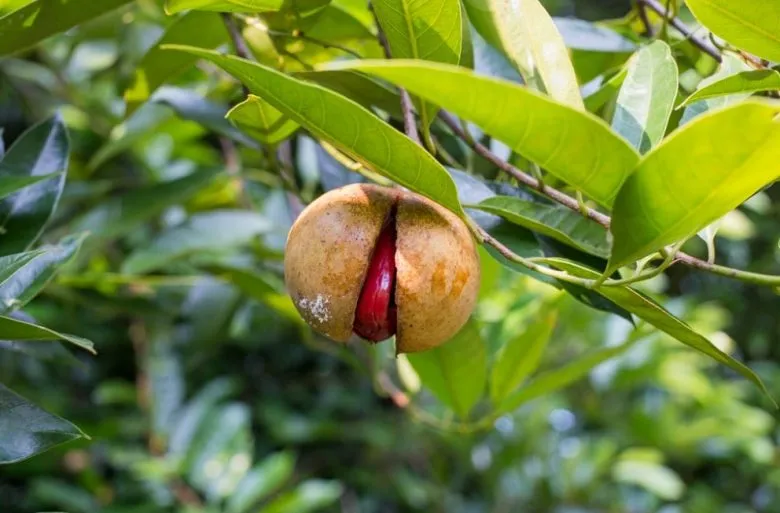
There Myristyca fragrans it is an evergreen tree, on average 8 to 10 meters high, but which sometimes reaches 20 meters. Its bark is gray-black, with a smooth surface in the young specimens, vertically fissured in the old ones. The crown is conical in shape.
Leaves
The leaves of the nutmeg plant are persistent and inserted alternately on the branches. They have a short petiole, an entire and wavy margin, a leathery consistency, an elliptical shape with a narrow wedge-shaped base and a sharp apex. The surface is hairless, green and dark and shiny on the upper side, lighter and opaque on the bottom. Looking at the nutmeg leaf in transparency, numerous translucent points can be seen due to the presence of glands containing essential oil.
Flowers
Nutmeg is a dioecious plant, with the male and female flowers found on separate individuals. The male flowers are arranged in clusters at the axil of the leaves and have nine to eighteen stamens. Female flowers are solitary. Both have the calyx composed of a tubular portion, which at the top is divided into three yellowish-white lanceolate lobes. The petals are missing. The plant blooms all year round.
Fruits
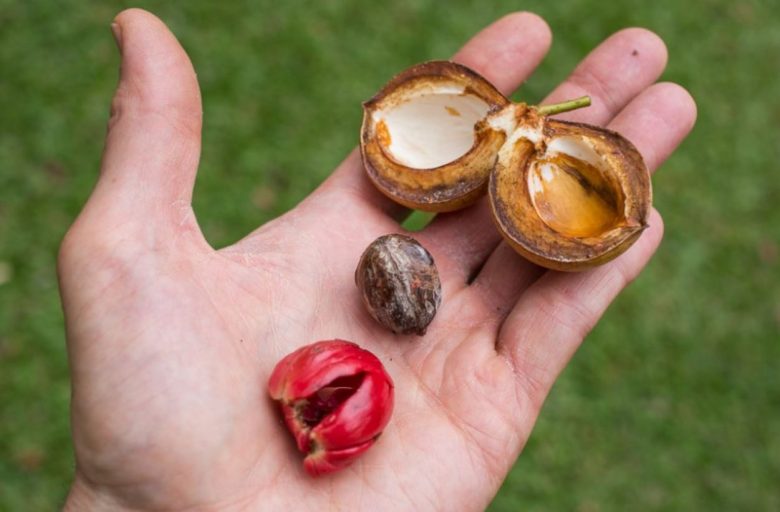
The fruit is a pear-shaped or roundish drupe, formed by a fleshy portion that divides in two when ripe and inside which there is a seed, or nutmeg.
The seed, of ovoid shape, is surrounded by a so-called formation aril, bright red in color but turns yellow when dry. The aril is composed of a whole part and numerous branches and constitutes the so-called mace.
Once collected, the entire seed must be left to dry and, once dry, its surface is marked by numerous branched striae. The color is greyish-brown, but it is white inside the furrows.
Can nutmeg be grown in Italy?
The nutmeg plant grows best in a tropical, very humid environment with a mild climate all year round. It does not tolerate temperatures below 10 ° C, so it could not be grown outdoors even in the southern regions.
This tree should be grown in a heated greenhouse, but the cultivation is not economically viable, as it takes almost 10 years to produce the first fruits and goes into full production after 20 years. The investment in structures and space is therefore not economically sustainable, so the seeds are imported directly.
Among other things, the nutmeg plant, in its areas of origin, has specific pollinating insects and is exempt from attack by parasites, conditions that may not necessarily reproduce in our latitudes.
Constituents and properties of nutmeg
The real nutmegs, that is the seeds and their wraps mace, are the parts of the fruit that are used in the West. In the areas of origin, the fleshy portion is also consumed, used to prepare jams and candied fruit.
His main constituents are: essential oil (mystyricin), mucilages, saponins. The properties, on the other hand, are: flavoring, digestive, carminative, stimulant, rubefacent, hallucinogenic.
Essential oil and toxicity risks
THE problems in excessive consumption nutmegs are due to the high concentration of mystiricin, an active ingredient contained in the essential oil present within the nuts themselves. If ingested in excessive doses it triggers hallucinatory phenomena, convulsions and even severe uterine contractions.
For this reason, in recent years in the poorest areas of Asian countries there have been reports of abuse of nutmegs eaten whole and in large quantities, as a cheap but high-risk drug.
The uses of mace
Mace, the outer shell of the seed, is used both as a spice and as an external medicine. It is also known by the names of mace And nutmeg flower.
In the kitchen it is used like the best known saffron, being able to color the dishes yellow. It is excellent in spiced vinegars and can be used in the preparation of a liqueur such as nocino.
Having marked revulsive properties, it is widely used for medicinal purposes, in particular in the preparation of ointments and creams that activate the circulation of the treated area. Furthermore, it is useful in case of neuralgic pains.
In commerce, it is found with ease in herbal medicine.
Nutmegs in the kitchen
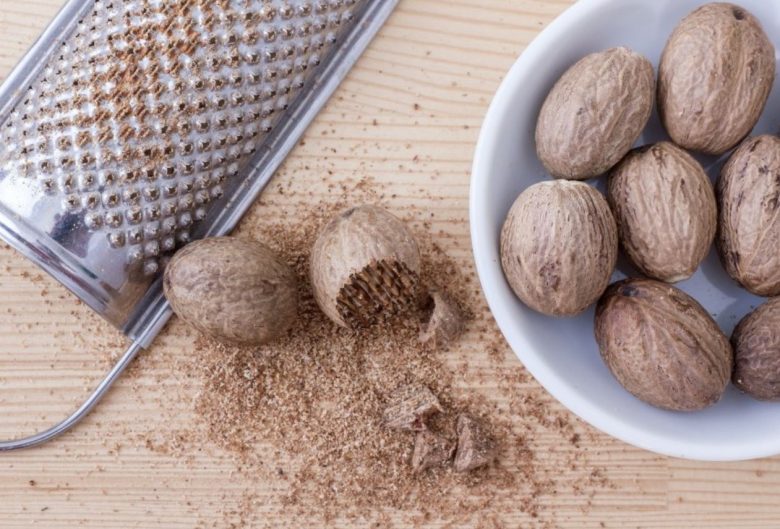
Real nutmegs find the right place and use once they have been reduced to powder. They are in fact used as a flavoring of foods, including sweets and liqueurs. As it is motion, in the kitchen only a pinch is used, having a very strong, penetrating and covering aroma. For this reason, its use does not incur the risk of toxicity described above. Nutmeg, in the right proportions, has a good digestive action, as it stimulates the secretion of enzymes and blocks intestinal fermentations. They are found in sold in supermarkets, both as whole dried and powdered nuts.

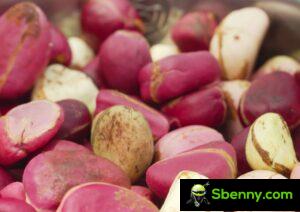
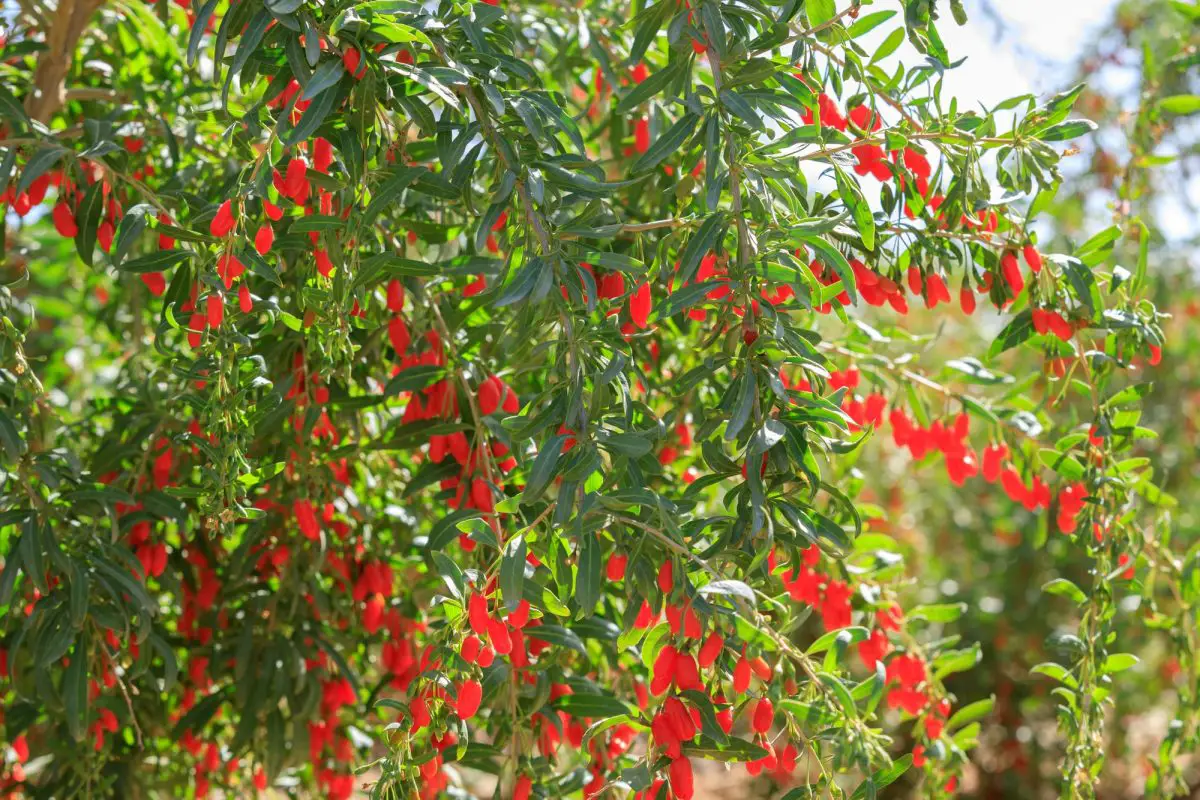
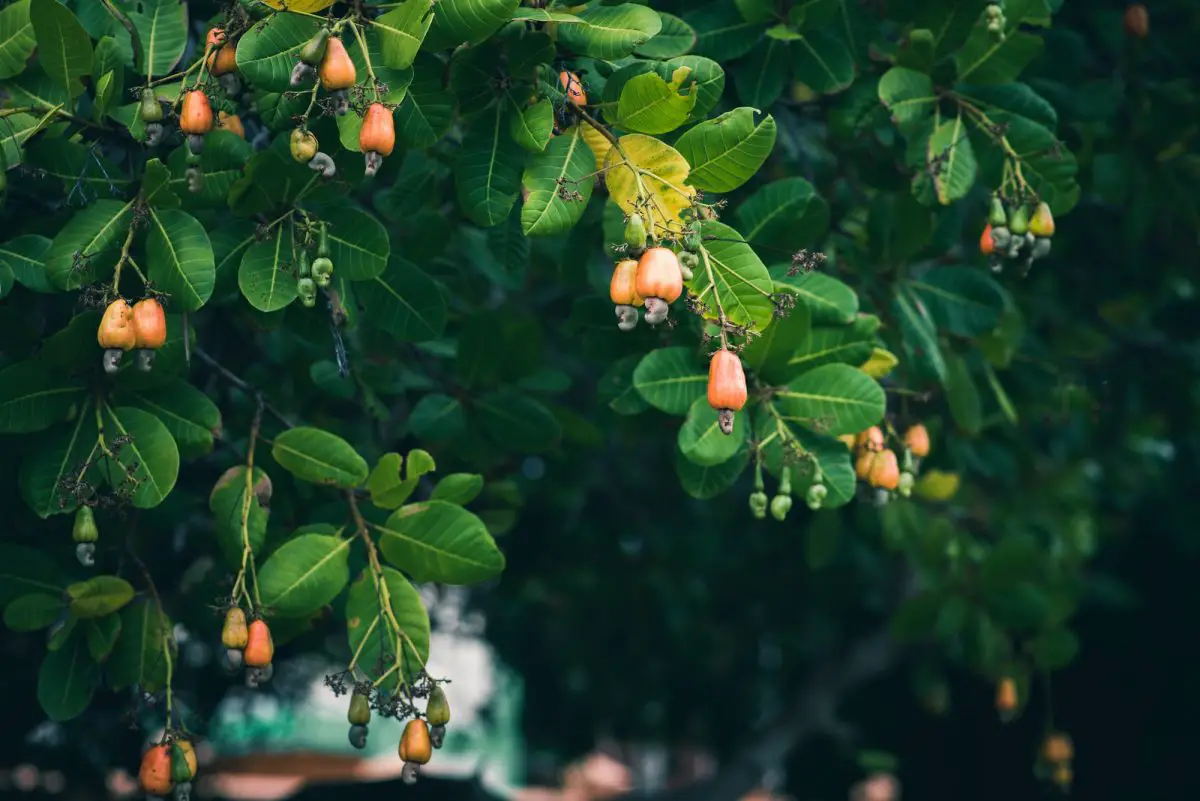
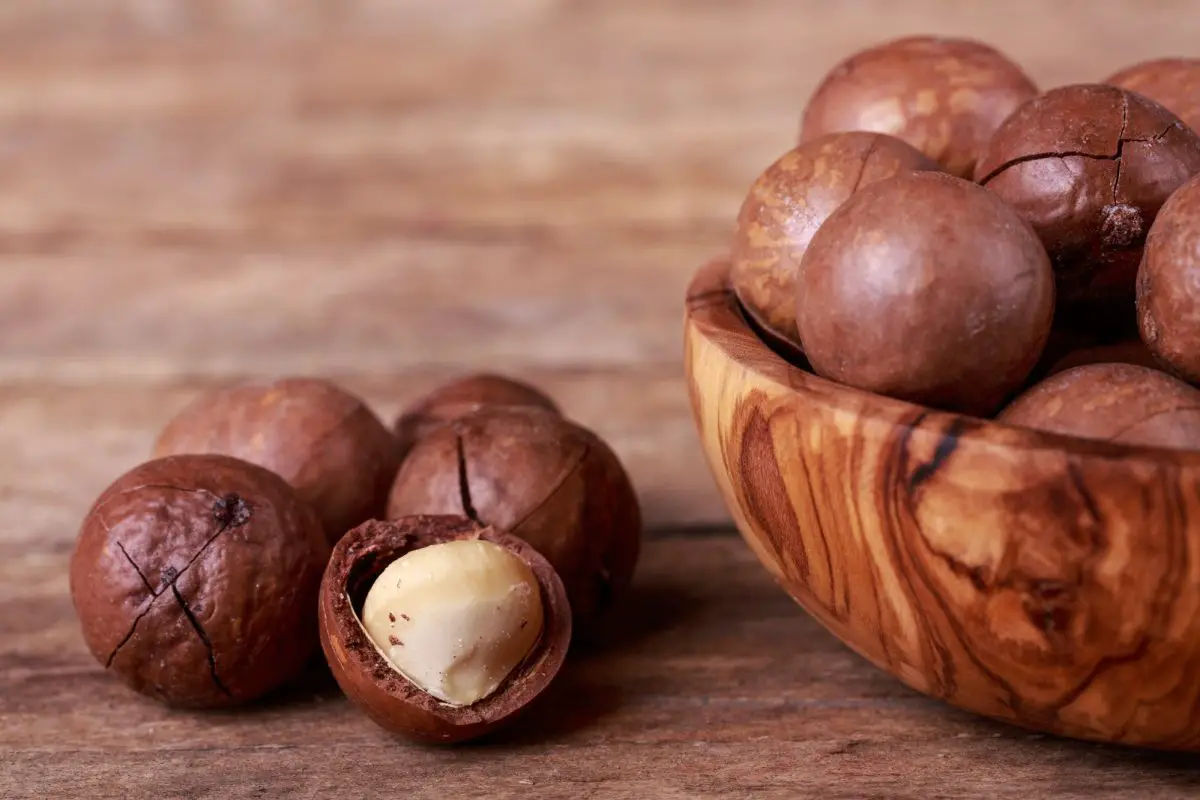
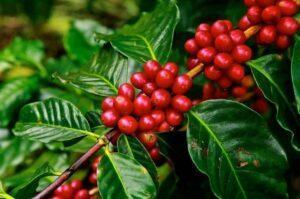
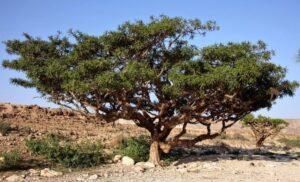
Start a new Thread